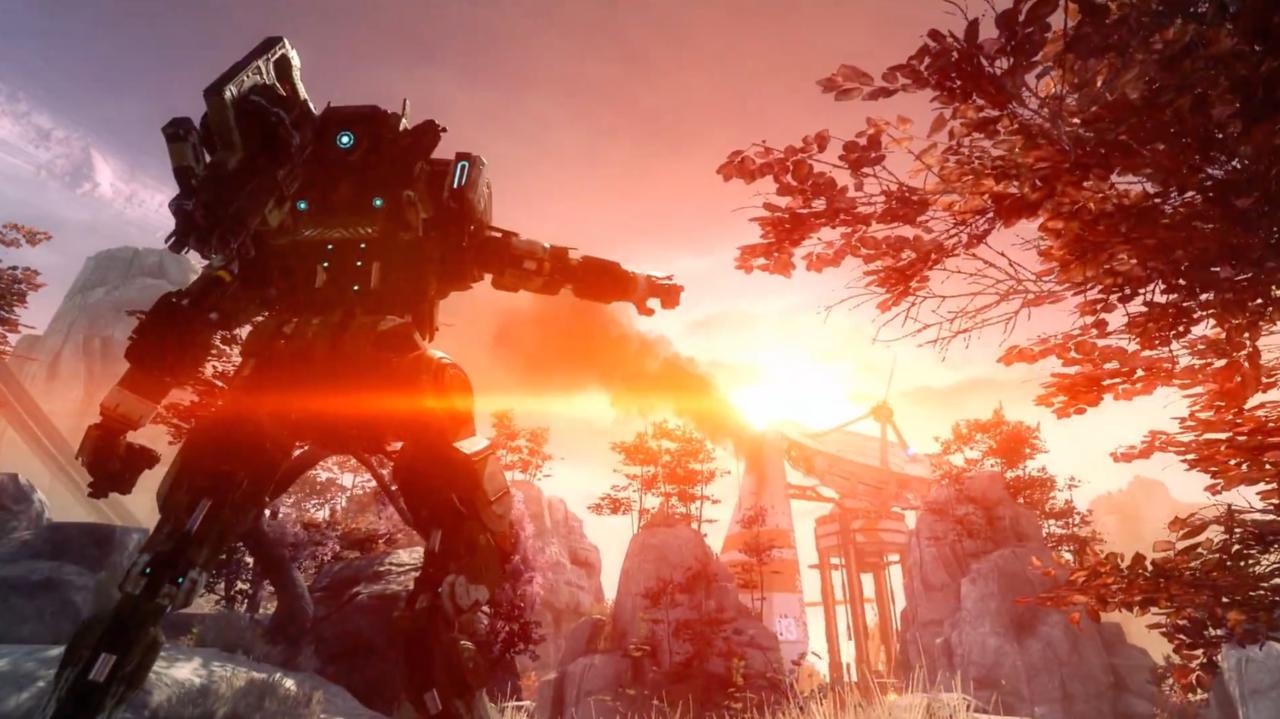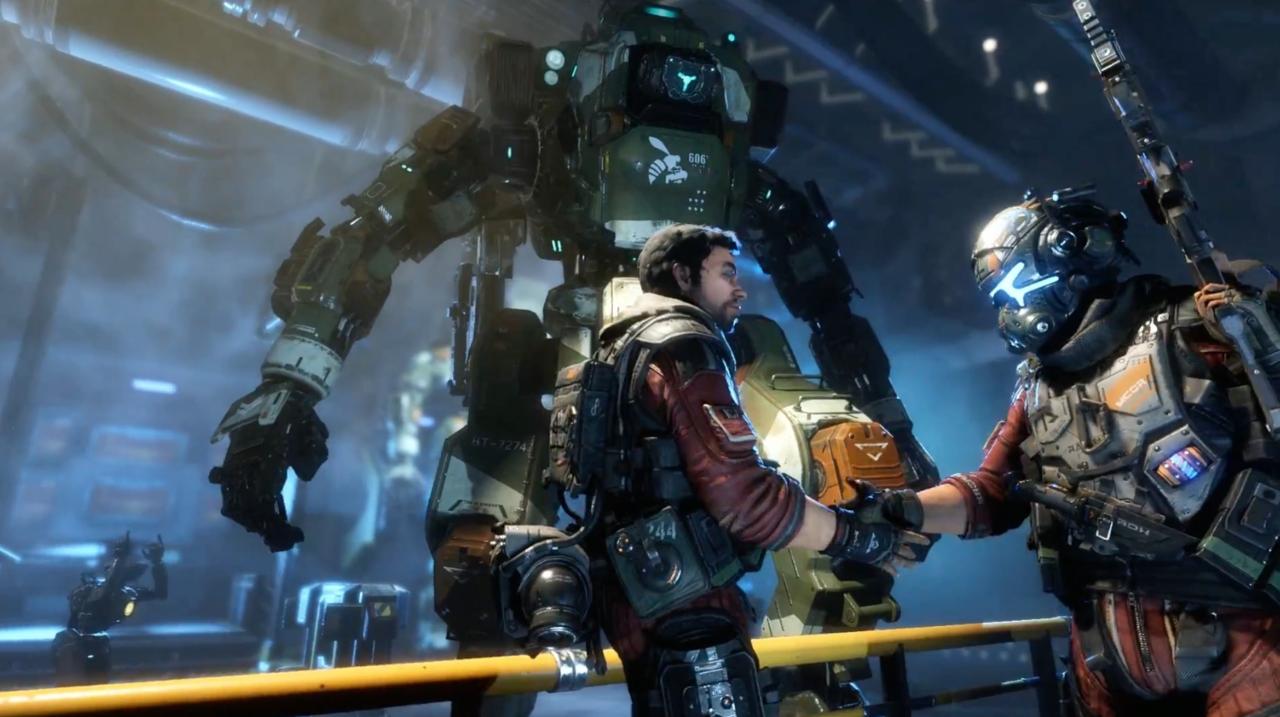Titanfall 2 is a game about momentum. It knows when to rush forward at a breakneck pace. It knows when to give us time to breathe. Both in its single player campaign and its multiplayer modes, Titanfall 2 has a more measured pace than its predecessor, making the build-up to its climactic battles just as enticing as the events themselves. It's every bit as kinetic and fluid as the first Titanfall--but in many respects, it's a much better shooter.
As with the first game from Respawn Entertainment, Titanfall 2 revolves around two layers of combat: conventional firefights between human combatants, and clashes between massive bipedal mechs. As a boots-on-the-ground pilot, Titanfall 2 feels more like a traditional shooter--albeit one with pristine controls and a fluid traversal system. The first Titanfall sparked the trend of shooters focused on movement, and with its sequel, the series reestablishes its place at the head of the pack. The loop of sliding, double jumping, vaulting a ledge, and running along a wall to flank an enemy feels invigorating and intuitive.
Then it comes time to call in your mechanical ally from orbit, and everything changes when it hits the ground. Because it's when these two layers engage in a tug-of-war that Titanfall 2 reveals its true brilliance. What was once an even fight becomes a David versus Goliath scenario: a pilot rushes to cover, fires off a rocket, glides along a nearby wall, avoids a missile salvo from her robotic opponent, activates her cloaking device, and enters a nearby ravine to order a Titan of her own.
This sequence is intense, but in Titanfall 2, it's commonplace. Momentum often shifts as one team gains control of the battlefield, only to lose ground when the other notices a weak spot, and attacks it.

This is crucial in Titanfall 2. Now more than ever, combat requires forethought and intelligence. Humans may be careening across the map with grapple hooks, while phase-warping ninja mechs cut through laser-powered robot warriors--but beneath all of this is a hidden nuance. Despite the bombast and spectacle, Titanfall 2 is a thinking person's shooter.
The sequel's new Titans embody this sentiment. In place of the basic light, medium, and heavy variants from the first game, Titanfall 2 employs six distinct walking battle tanks with arsenals of their own. They're almost like superheroes: one attacks with a thermite launcher and flame attacks, while another fires a chest-mounted laser cannon at unlucky opponents.
Each of the Titans' abilities are easy to learn, but difficult to master, as the saying goes. Their loadouts immediately make sense, and it's easy to see that Northstar's low armor and long-range railgun make her an ideal sniper--but new layers reveal themselves the more you play. Take Scorch, for example. His flame shield dissolves incoming projectiles, providing extra protection while he tries to back away from close-quarter engagements. But the flame shield has other uses: at one point, an enemy pilot came flying at me on a grappling hook. By igniting my fiery barrier, I melted him just as he came close to my cockpit.
There are elements of fighting games or MOBAs here--each Titan has a tell, and a way to counter it.
Learning the intricacies of each Titan is paramount not just for offense, but defense, too. Each mech has a distinct aesthetic, so as you round a corner and see a Ronin approaching you, you know to put distance between your Titan and the shotgun-toting enemy. There are elements of fighting games or MOBAs here--each Titan has a tell, and you only have a few brief moments to counter it to your advantage.
The new Titans lend a very different pace to multiplayer matches. While the first Titanfall was always turned up to 11, so to speak, with smaller maps and cookie-cutter Titans focused on dealing damage, Titanfall 2 understands the value of breathing room. It doesn't burn you out with an onslaught of firefights--its maps are focused on exterior environments, and are often on the larger side, giving you time to plan out your attack with the intricate Titan loadouts. The plan may go awry, but it lends more weight to each enemy encounter. There's a sense of build-up as you approach a capture point, knowing full well which Titans occupy the area, and thinking through each step in your head.
Each multiplayer mode is tailored to facilitate Titanfall 2's interwoven combat systems, but also to twist the formula in creative ways. Bounty Hunt is my favorite--you gain currency by killing the enemy team and AI grunts that litter the map, and at the end of each wave, you're given the option to deposit your loot in one of several banks. But here's the wrinkle: you have to leave your Titan in order to do so. What's more, clever players will camp near banks to pick off unsuspecting Pilots as they approach their goal. It's a frantic game of cat and mouse that increases in tension as the banks open and each team knows exactly what the other is doing, or trying to do.

Then there's Last Titan Standing, a match that ends when the last mech is destroyed. It's the most methodical mode, as team members assess the enemy team composition and approach firefights carefully, considering there are no respawns. Pilot vs. Pilot eschews the titular robots, opting instead to focus on the fluid human against human combat--but even without its hulking behemoths, Titanfall 2 is frantic and exhilarating.
That expert attention to pacing and momentum carries over into Titanfall 2's single-player mode as well. While the first Titanfall consigned its story to a specific story driven multiplayer playlist, the sequel places you in a discrete campaign with its own plot, characters, and set pieces. It follows Jack Cooper, a Militia rifleman-turned-pilot, and his sentient Titan BT-7274, as they battle the Interstellar Manufacturing Corporation and the Apex Predator mercenary group.
Unfortunately, the writing here is lacking. Your main enemies are outlandish villains, and the plot ends abruptly, before it feels like it should. And while there is often humor and sentiment to be found between Cooper and BT, the jokes become rote when they focus too much on the Titan's inability to understand human sayings and turns of phrase. There are moments where I felt a real connection to my Titan, and there is heart to be found throughout this story. But those moments are few and far between
The single-player campaign gradually increases in velocity and scope, coalescing in mid-air ship battles and frantic Titan charges.
Yet in terms of design and pacing, the five-hour campaign is fantastic. It begins with a botched mission on the planet Typhon, and although it takes a little too much time to do anything out of the ordinary, the missions then increase in velocity and scope, coalescing in mid-air ship battles, frantic Titan charges, and old-school boss fights.
These boss fights pit you against the other Titan variants, and as you progress through the missions, you'll unlock all of Titanfall 2's Titan loadouts, gaining the ability to swap between them on the fly. This grants the campaign a dynamism not entirely present in multiplayer. You can enter a battlefield, discern the situation, and choose a different Titan based on the scenario, all in the span of several seconds. Coupled with the quality of Titanfall 2's missions--my favorite plays with time in a way I won't spoil here--the ability to change Titans on the fly gives the campaign a pacing of its own.
Titanfall 2 accomplishes several things. It introduces seemingly minor changes to its multiplayer sphere, but results in more fluid pacing and an intelligent gameplay loop. It adds a single-player campaign that builds in momentum with each mission, culminating in a grandiose battles that makes use of both Pilot and Titan combat.
And lastly, Titanfall 2 demonstrates a vitality that its predecessor couldn't. Whereas the first Titanfall kept up its breakneck pace throughout the entirety of every match, Titanfall 2 understands that sometimes, dialing things back for a few moments can make the long run much more enjoyable. In many ways, Titanfall 2 feels like the game Respawn should have made in 2013. It's a fantastic sequel. It's a fluid shooter. It's a spectacular game.